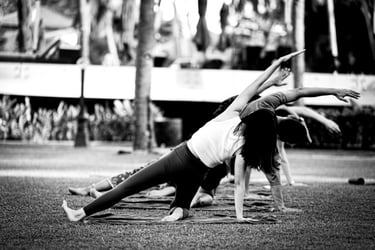Stiff Joints and Muscles
Hidden Clues
Dehydration: Muscles and joints rely on proper hydration to function smoothly. When dehydrated, the body may experience stiffness due to a lack of lubrication in the joints and muscles.
Lack of Movement: Prolonged periods of inactivity or sitting in one position can lead to stiffness. The body signals the need to move and stretch to keep the joints and muscles flexible.
Nutritional Deficiencies: Deficiencies in essential nutrients like magnesium, potassium, or vitamin D can cause muscle stiffness or joint discomfort. These nutrients are crucial for muscle function and joint health.
Overuse or Strain: Stiffness after physical activity might indicate that the muscles or joints were overused or strained. This is the body's way of telling you to allow time for recovery.
Cold Temperatures: Exposure to cold can cause muscles to contract and become stiff, signalling the need to warm up and increase blood flow to the affected areas.
Stress and Tension: Emotional stress can manifest physically as muscle tension and stiffness, particularly in areas like the neck, shoulders and back.
Early Signs of Arthritis: Persistent stiffness, especially in the morning or after periods of inactivity, can be an early sign of arthritis or other joint-related conditions.
Poor Posture: Maintaining poor posture, whether sitting or standing, can lead to muscle imbalances and stiffness, especially in the back, neck, and shoulders.
Lack of Stretching: Skipping warm-up or cool-down stretches before or after physical activity can lead to stiffness as the muscles are not properly prepared for exertion or recovery.


Stiff joints or muscles are another subtle signal from the body that something may be off. This stiffness can indicate several underlying issues or needs, such as:
Stiff joints or muscles are often a sign that the body needs attention, whether it's more hydration, movement, proper nutrition, or stress relief. Addressing these subtle signals early can help prevent more serious issues from developing.
Addressing stiffness in the joints and muscles requires a mindful approach, and one effective method is incorporating gentle movements as in our (seated) Opening Sequence. This practice focuses on subtle, controlled movements that help direct energy to the joints, improving circulation and flexibility. By gently working through the body's natural range of motion, this sequence not only relieves stiffness but also enhances the flow of prana (vital energy), bringing balance and vitality to areas that often become stagnant.
Regular practice can help prevent stiffness, support joint health, and create a deeper awareness of the body’s needs, making it an invaluable addition to any wellness routine.
Further Reading
The Body Communicates : Understanding Body Awareness
The Subtle Signals of The Body : What Your Body Is Trying To Tell You
More Insights
